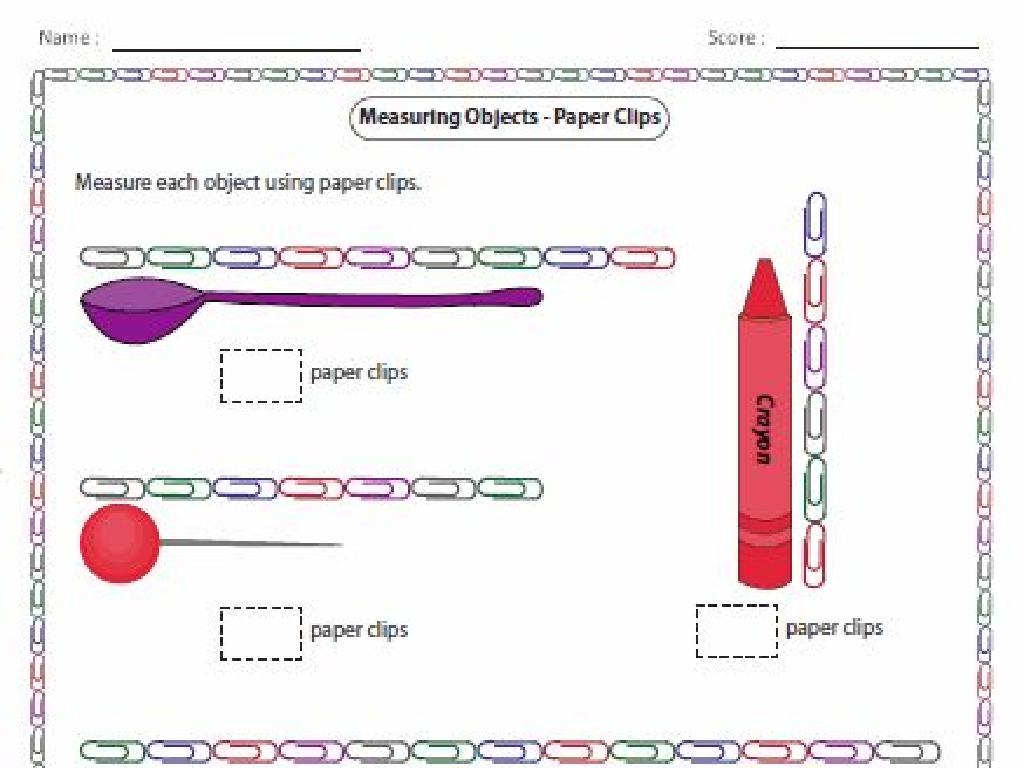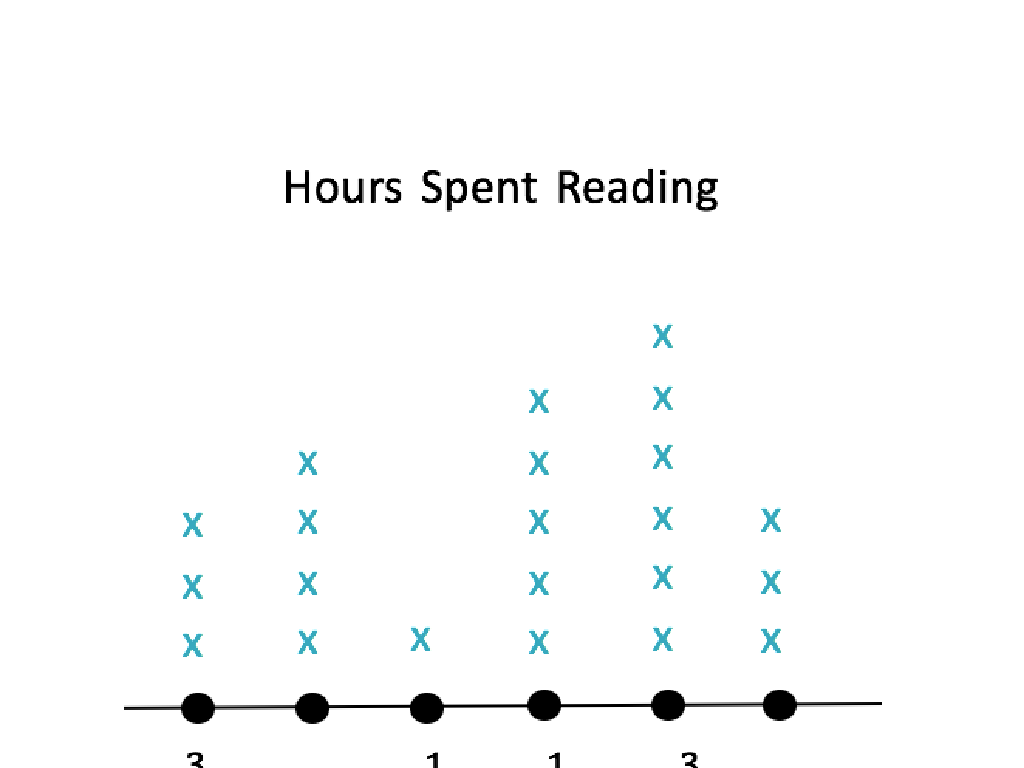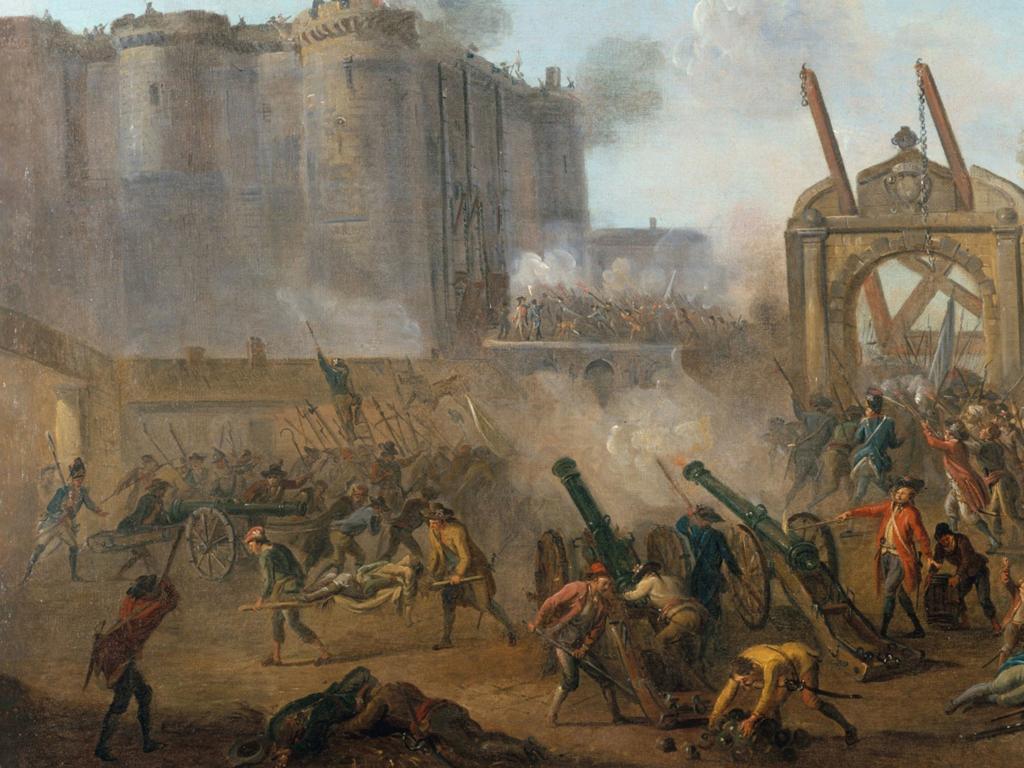Regroup Tens And Ones
Subject: Math
Grade: First grade
Topic: Place Value
Summary: This engaging first grade math lesson focuses on place value, with a special emphasis on regrouping tens and ones. Students will use blocks, drawings, and hands-on games to explore how numbers are built from tens and ones, and how grouping ten ones creates a new ten. Interactive activities like the Regrouping Race reinforce foundational skills, helping students confidently compose and decompose numbers within the base-ten system, setting the stage for future math success.
Please LOG IN to download the presentation. Access is available to registered users only.
View More Content
Welcome to Place Value!
– Greetings First Graders!
– Today’s lesson: Place Value
– Understanding Tens and Ones
– Tens are groups of 10 ones, like 10, 20, 30…
– Fun with numbers!
– We’ll use blocks and drawings to learn!
|
This slide is an introduction to the concept of place value, specifically focusing on tens and ones, which is fundamental in understanding the base-ten system. Start the lesson with a warm greeting to make the students feel comfortable. Explain that place value helps us to see the value of each digit in a number based on its position. Use visual aids like blocks or drawings to represent tens and ones. For example, show 10 blocks grouped together to represent ‘one ten’ and single blocks to represent ‘ones.’ Make the lesson interactive by asking students to form numbers using tens and ones. This will help them grasp the concept of regrouping and see how numbers are composed and decomposed into tens and ones.
Understanding Place Value: Tens and Ones
– What is place value?
– It tells the value of each digit in a number.
– Each number has a place
– A digit can be in the tens place or ones place.
– Focus on tens and ones
– Today we’ll learn about the ‘tens’ and ‘ones’ places.
– Place value in everyday numbers
– Like in the number 24, 2 is in the ‘tens’ place, and 4 is in the ‘ones’ place.
|
This slide introduces the concept of place value, which is fundamental in understanding how numbers are built and how to work with them. Explain that each digit in a number has a specific place and that place determines its value. Use simple, everyday examples to illustrate the ‘tens’ and ‘ones’ places, such as counting objects or money. Emphasize that the ‘tens’ place tells us how many groups of ten there are, and the ‘ones’ place tells us how many single units. Use visual aids like blocks or drawings to help students visualize the concept. The goal is for students to recognize the value of digits based on their position in a two-digit number.
Counting with Ones
– Ones are single units
– Count 1 to 10 using ones
– Practice counting: 1, 2, 3, … up to 10
– Each one has its place
– Visualize ones as individual blocks
– Understanding ones is key
|
This slide introduces the concept of ones as the building blocks of numbers. Start by explaining that ones are single units, the smallest building blocks in our number system. Engage the students by counting aloud from 1 to 10, emphasizing each number as an individual unit. Use visual aids like blocks or counters to represent ones, helping students to see that each ‘one’ has its own place in the sequence. Reinforce the idea that understanding ones is essential for grasping larger numbers and for future math concepts like addition and subtraction. Encourage students to practice counting with ones at home using everyday items.
Making a Ten!
– Grouping 10 ones makes a ‘ten’
– Ten ones are the same as one ‘ten’
– Practice grouping ones into tens
– Let’s use objects like blocks or beads to group into sets of 10
– Understanding tens and ones
– Knowing place value helps us with bigger numbers
|
This slide introduces the concept of regrouping ones into tens, which is a fundamental part of understanding place value. Start by explaining that when we count individual items (ones), we can group them into a set of ten, which we then call a ‘ten’. Use physical objects like blocks, beads, or drawings to visually demonstrate the grouping of ten ones into one ten. Encourage the students to practice this by grouping items themselves. Emphasize that this is how we start to understand larger numbers and their structure in terms of tens and ones. The activity should be interactive, allowing students to manipulate objects to form groups of ten. This tactile experience reinforces the concept of place value and prepares them for understanding more complex numbers.
Understanding Tens and Ones
– Numbers have tens and ones
– Like building blocks, every number is made of tens and ones.
– Example: 15 has 1 ten, 5 ones
– Think of 15 as a bundle of 10 sticks and 5 single sticks.
– Practice with various numbers
– We’ll use blocks to represent tens and ones for different numbers.
|
This slide introduces the concept of place value, specifically focusing on tens and ones. Start by explaining that all numbers are made up of tens and ones, which are the building blocks of our number system. Use physical props like bundles of sticks or base-ten blocks to visually demonstrate the concept. For example, show 15 as a group of 10 sticks tied together and 5 individual sticks. Encourage the students to practice with different numbers, using the blocks to represent tens and ones. This hands-on activity will help them visualize and better understand how numbers are composed, setting a foundation for future math skills.
Understanding Regrouping Tens and Ones
– Regrouping when ones exceed 9
– Making a new ten from ones
10 ones are the same as 1 ten, it’s like bundling sticks together!
– Regrouping is like exchanging
Think of it as trading 10 ones for 1 ten, just like swapping items.
– Practice with examples
If we have 15 ones, we can make 1 ten and have 5 ones left.
|
This slide introduces the concept of regrouping in the context of place value for first-grade students. When students count ones and reach a number greater than 9, they need to understand that these can be grouped together to form a ‘ten’. This process is known as regrouping or ‘carrying over’ in addition. Use hands-on examples with physical objects like blocks or counters to demonstrate this concept. Have students practice by starting with a pile of more than 9 ones and grouping them into tens and leftover ones. This visual and tactile approach will help solidify their understanding of regrouping tens and ones.
Activity Time: Build with Blocks!
– Build numbers with blocks
– Use tens and ones blocks
– Create various numbers
– Show and explain your regrouping
– For example, make 10 ones into a ‘ten block’ and explain
|
This activity is designed to help students visualize the concept of place value and the process of regrouping ones into tens. Provide students with tens and ones blocks and let them physically manipulate these to build different numbers. Encourage them to explore how ten ones can be combined to form a ‘ten block’. After creating their numbers, students should present their regrouping process to the class or in small groups, explaining how they converted ones to tens. This hands-on experience reinforces their understanding of place value and the base-ten system. Possible activities include: 1) Building the highest number possible, 2) Regrouping to create a given number, 3) Competing to see who can regroup the fastest, 4) Creating and solving their own regrouping problems.
Review and Share: Tens and Ones
– Reviewing tens and ones
– Show a number using blocks
– Use blocks to represent a number, like 10 blocks for ten and 1 block for one.
– Share with the class
– Explain your regrouping
– Tell us how you made a bigger number by combining tens and ones.
|
This slide is meant to consolidate the students’ understanding of place value, specifically the concept of tens and ones. Start by reviewing the concept, asking students to recall what they’ve learned. Then, move on to a hands-on activity where students use physical blocks to represent numbers, showing their understanding of how tens and ones work together. Each student should have the opportunity to share their number with the class and explain how they grouped their blocks to represent tens and ones. This activity will help reinforce their learning and allow you to assess their comprehension. Possible activities could include grouping blocks to make different numbers, showing how ten ones can be regrouped into one ten, and vice versa, or combining tens and ones to make new numbers.
Class Activity: Regrouping Race
– Play ‘Regrouping Race’ game
– Partner up for regrouping
– Regroup ones into tens quickly
– Win by regrouping correctly first
|
This activity is designed to help students understand the concept of regrouping in a fun and interactive way. Divide the class into pairs and provide each team with a set of objects or number cards. The goal is for students to work together to regroup ones into tens (e.g., 10 ones become 1 ten). The first team to finish regrouping their set correctly wins the race. Possible variations of the activity could include using different numbers of objects, timing the race to see if students can beat their previous time, or having a relay race where students take turns to regroup numbers. This hands-on experience reinforces the concept of place value and the base-ten system. Make sure to walk around the classroom to assist and ensure that students are regrouping correctly.
Celebrating Place Value Stars!
– Congrats on mastering tens and ones!
– Regroup 9+ ones into a new ten
– If you have 10 or more ones, group them to form a ‘ten’.
– You’re all place value champions!
|
This slide is a celebration of the students’ understanding of place value, specifically the concept of tens and ones. It’s a conclusion slide that reinforces the key lesson that when counting ones and the count exceeds 9, it’s time to regroup those ones into a new ten. This is a foundational concept in place value that will help them in more advanced math. Praise their efforts and understanding, and remind them that they are now ‘place value stars’. Encourage them to continue practicing with different numbers and to use this knowledge in various scenarios, both in math problems and in real-life situations where counting is necessary.





